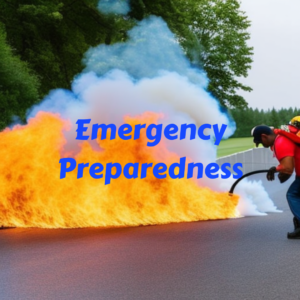Trauma response is a high-stress, fast-paced environment where every second counts. In an emergency situation, responder (whether trained citizens or professional first responders) must quickly assess and treat a patient’s injuries to improve their chances of survival. The MARCH algorithm is a critical tool that helps responders prioritize and manage the treatment of trauma patients effectively.
The MARCH algorithm is an acronym that stands for Massive Bleeding, Airway, Respiration, Circulation, and Head Injury/Hypothermia. This algorithm is a step-by-step approach that medical professionals use to assess and treat patients with trauma-related injuries. The goal of the MARCH algorithm is to identify and manage life-threatening injuries first, followed by injuries that may become life-threatening if not treated promptly.
Let’s take a closer look at each component of the MARCH algorithm:
Massive Bleeding: Massive bleeding is a leading cause of preventable death in trauma patients. Responders assess the patient for external and internal bleeding and take immediate action to stop the bleeding. This may include applying direct pressure, using a tourniquet, or administering blood clotting products.
Airway: An open and functional airway is critical for oxygenation and ventilation. Responders assess the patient’s airway for any obstructions or injuries and take action to secure it if necessary. This may include intubation or the use of a nasopharyngeal airway.
Respiration: Proper breathing is essential for oxygenation and ventilation. Responders assess the patient’s respiratory rate and depth, and take action to support their breathing if necessary. This may include administering oxygen or providing mechanical ventilation.
Circulation: Adequate circulation is necessary to maintain organ function. Responders assess the patient’s heart rate, blood pressure, and perfusion, and take action to support their circulation if necessary. This may include administering fluid or blood products or performing interventions to improve cardiac function.
Head Injury/Hypothermia: Trauma patients are at risk of developing hypothermia or head injuries. Responders assess the patient for signs of hypothermia or head injuries and take action to manage these conditions. This may include providing warming measures or performing neuroprotective interventions.
The MARCH algorithm is a valuable tool that helps responders prioritize and manage the treatment of trauma patients effectively. By following this algorithm, healthcare providers can quickly identify and manage life-threatening injuries, improve patient outcomes, and save lives. The MARCH algorithm is an essential component of trauma medicine and a critical tool for emergency medical responders, nurses, doctors, and trained by-standers.



